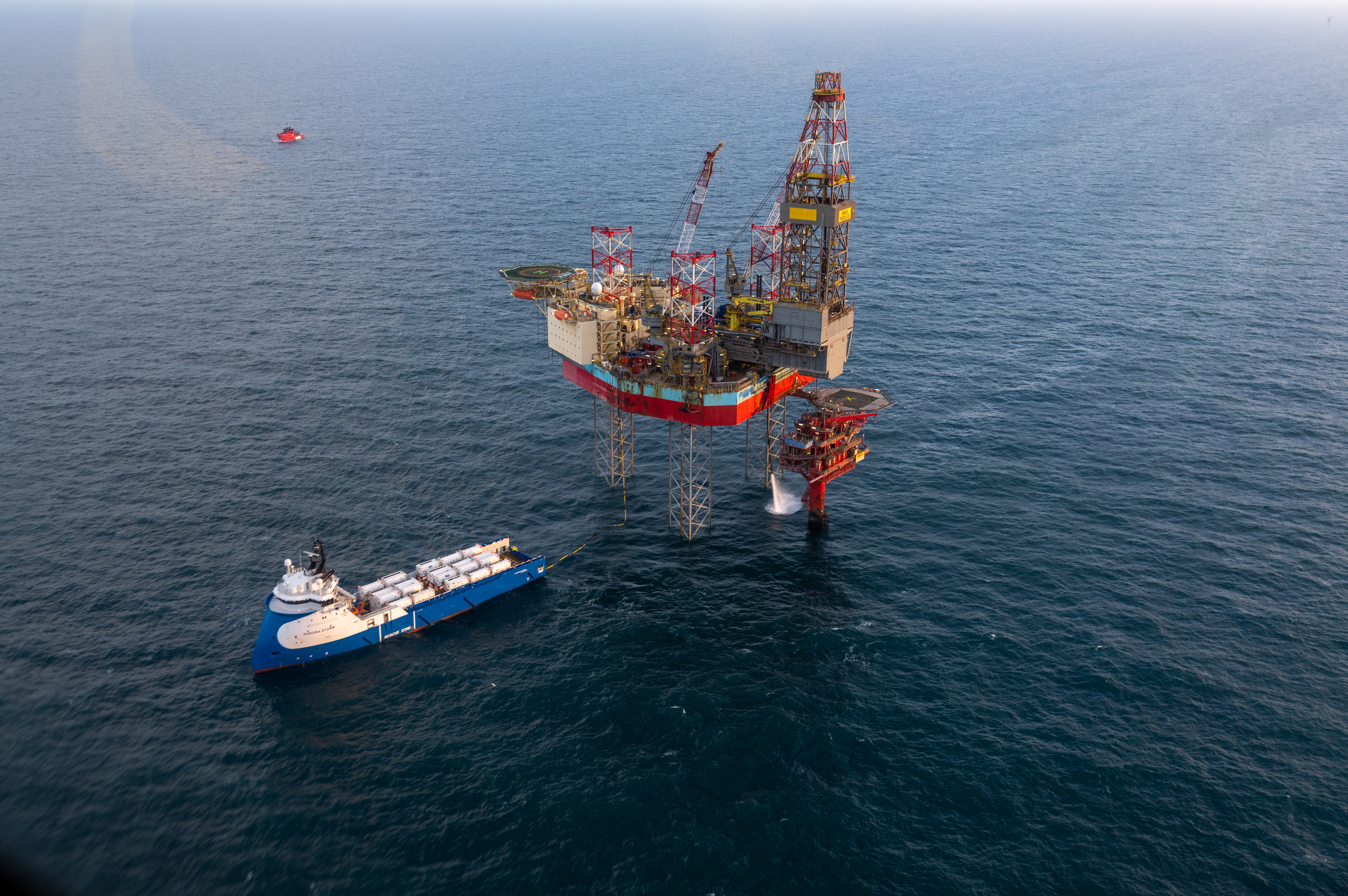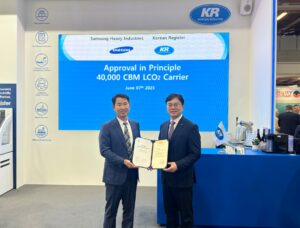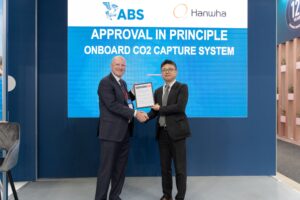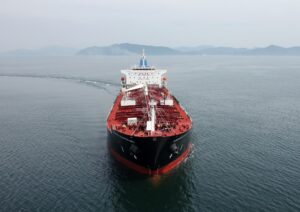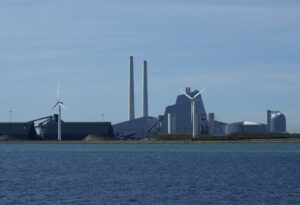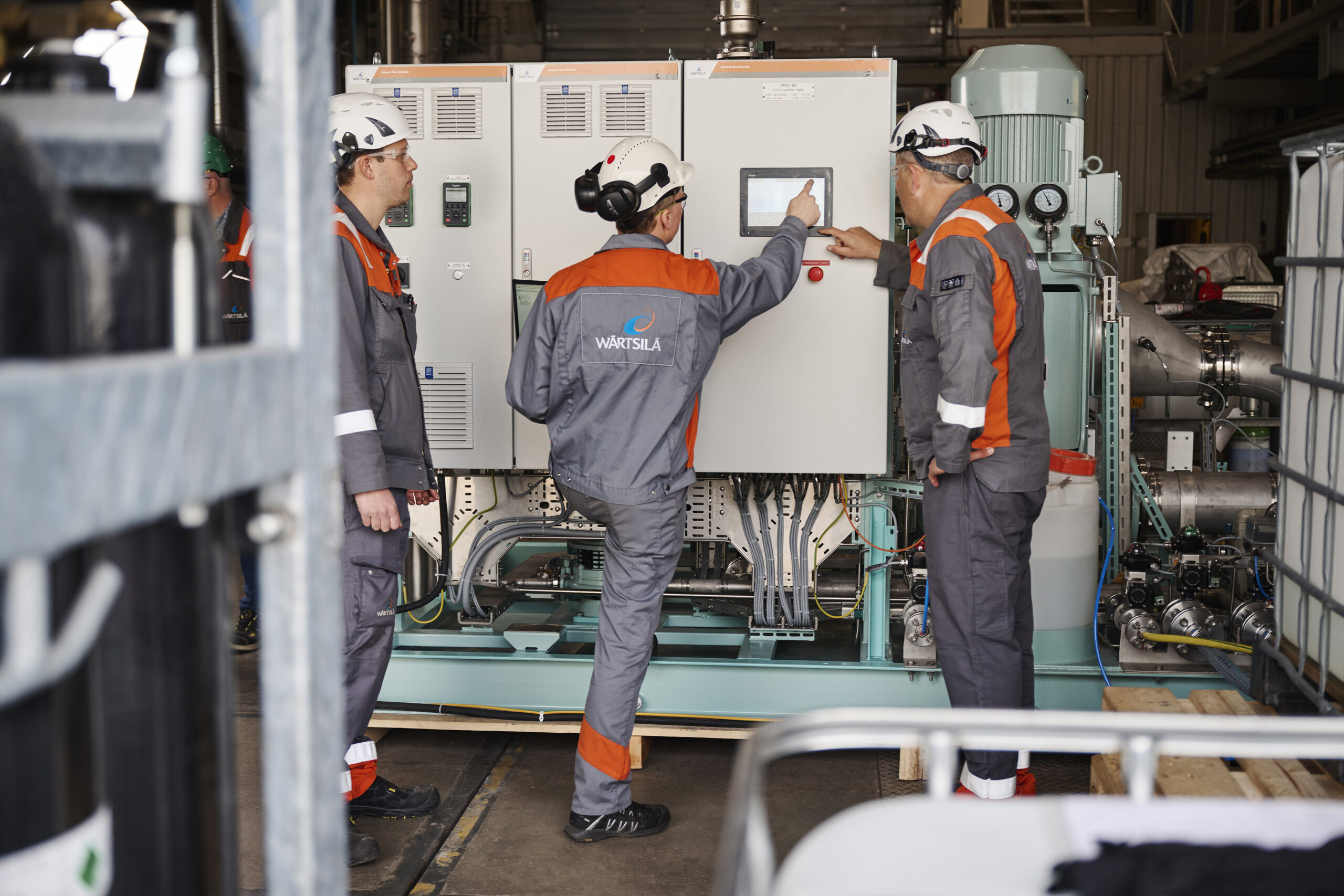Greensands project demonstrates political success of cross border CO2 shipments and raises questions about ramp up
Chemical group Ineos and Bosch-owner oil and gas company Wintershall DEA are two CO2 emitters that have begun shipping CO2 from Antwerp to a refurbished jack up rig in the North Sea for the gas to be stored permanently under the seabed.
It is one of the latest projects being rolled out in Europe to demonstrate that industrial emissions can be captured, shipped and then stored in dedicated underground reservoirs, in this case depleted gas fields.
Wintershall and INEOS CEOS as well as politicians and even the crown prince of Denmark were at the inauguration festivities in Esbjerg, Denmark earlier in the month to celebrate what they are describing as ground breaking and a significant turning point in Europe’s decarbonisation journey.
This project called Greensands is significant as it has been specifically developed to demonstrate that the challenges of cross border CO2 waste shipment and storage, albeit between two littoral European Union countries, can be resolved.
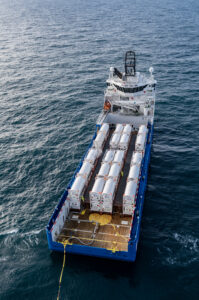
The CO2 comes from the waste stream of an Ineos chemical factory in Antwerp Belgium. It is being loaded into twenty-foot tank containers and then taken by truck to the port, where the containers are loaded onboard a vessel, the offshore support ship Aurora Storm which takes them into Danish waters to the depleted Nini West reservoir off the West Jutland coastline.
The volumes are far from significant at the moment. Aurora Storm takes only 40 standard tank containers on each voyage. Our calculations may be wrong but with a twenty foot (20 teu) tank container holding (depending on tank pressure) about 20,000 litres (13.6 tonnes) of liquified gas (19,600kg), the 40 tanks on Aurora Storm could represent over 500 tonnes of CO2.
When one takes into account any transportation emissions from trucks and vessel the net gain will be less, but for Europe this is a significant political and policy step.
Other members of the Greensands project include Dan Unity, a joint venture between two Copenhagen-based gas shipping companies Evergas and Navigate owned Ultragas. Dan-Unity was formed in 2021 and shortly after announced it has a design for, and approval in principle from a class society of, large CO2 carriers, although did not go so far as mentioning any confirmed orders by either of its owners or any other owner.
Carbon capture and storage is becoming one of the most talked about technology solutions for heavy CO2 emitting industries, such as chemical producers, oil and gas giants, steel mills and cement makers. However, the technologies to achieve it are both expensive and complex. There are also legislative hurdles that need to be overcome too, such as the texts of the London Protocol. This is set to be discussed at the International Maritime Organisation, especially as onboard carbon capture systems are being developed for shipping.
But while carbon capture and storage is being touted as one of the key strategies for industrial decarbonisation, the fact remains that globally there are still only nine CO2 storage projects in existence today, all with modest capture volumes, and some being CO2 storage as part of advance oil recovery systems where pressurised CO2 is in a near depleted reservoir to get as much hydrocarbon out of the ground as possible.
There is recognition that this technology needs to be ramped up significantly if it is to have a meaningful impact, and that a maritime shipping network is going to be needed, as countries like Denmark and Norway rent out empty oil and gas reservoirs for industrial CO2 sequestration.























